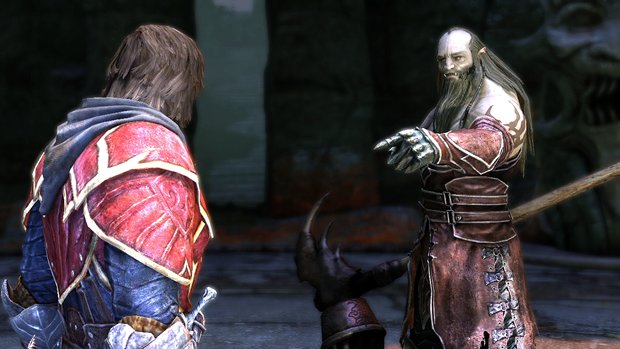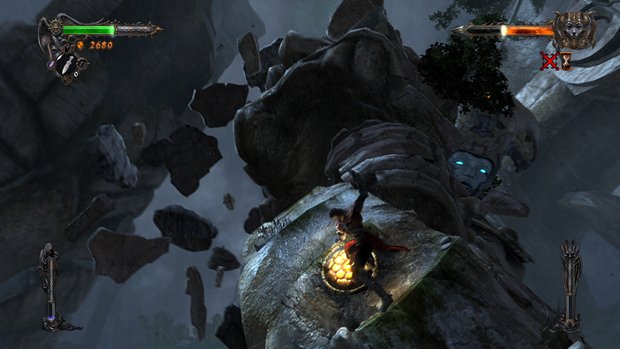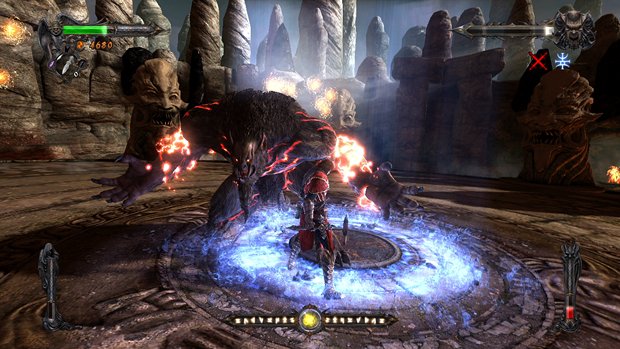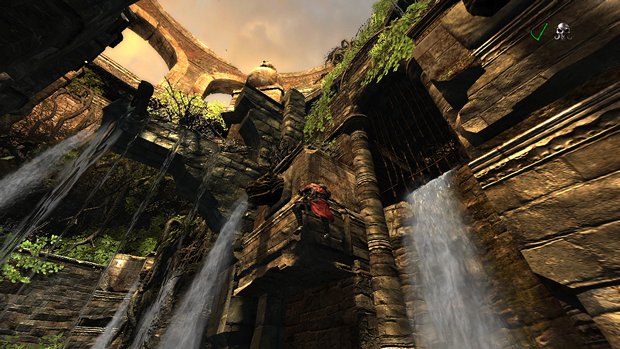Castlevania: Lords of Shadow – immense hands-on
We played through half the game... want to know what it's like?
Up until now, there's been a lot of talk about how Castlevania: Lords of Shadow may or may not turn out. We've learned various details trickling down, but we haven't known how it really plays. Well, now we know. We just finished a power session playing the game for pretty much nine hours straight. Let's allay the two main worries that statement brings up: 1) After nine hours, we were not done with the game – we were (we think) a bit past the halfway mark, so this is no six hour game; 2) We weren't bored of playing at the end of the nine hours, and could have played a bit more... but we had to write this preview, so...

The other looming question: has Castlevania broken its “crappy 3D entries” curse? The answer is unequivocally yes. Lords of Shadow is far away from the realm of suckdom. However, just how good it is can't be said until the review – we have played only half the game, after all. How good it will end up being will also depend on player preferences, and luckily we've got a werewolf's hairy buttload of gameplay details to help give you an idea of what you're in for.
This being a 3D Castlevania, it obviously won't be providing the same kind of action that has dominated the series for a while now. However, rest assured that this is no clunky, slow paced wander-fest. It is focused level design, fast and slippery action, and swift swashbuckling via combat cross swinging. One element that makes it feel not wholly Castlevania, and what shows the game's pre-Castlevanification origins, is that we heard no mention of Dracula during our play time. Yet, right when we had to stop playing was when the vampires showed up, so who knows what will happen.

Lords of Shadow kicks off with a rain-choked night turning the main street of a small village into mud. Werewolves come slinking over the palisade – thankfully, your first enemies aren't rats, bats, or skeletons. Right away, it's clear that this Castlevania is a brawler. Enemies take a lot of hits to kill, so combos are Gabriel Belmont's cash crop. Instead of the standard light and heavy attacks, you have direct and area attacks. We actually ended up using the area attacks very little until hours later, mostly because enemies tend not to swarm you, and with careful rolling, it's mostly simple to isolate and pick off single opponents. The area attacks also have a crucial weakness: they don't stun enemies with the initial hits, so you can't spam them - the enemies will just hit you even though you're hitting them. Later on in the game, we found area attacks becoming much more useful, which was nice since it made the overall flow of combat shift as the game progressed.
Almost right away you also get a very Castlevania weapon: throwing daggers. Swift and laser-accurate, they're surprisingly easy to land hits with even by just pushing the analogue stick in the direction of enemies. Since the daggers are silver, they have a lovely effect on werewolves – one toss and the lycans burst in an explosion of blood. Oh, and by the way, this game is bloody. It has God of War levels of nastiness - whether you're gouging out eyeballs, snapping necks, or prying jaws backwards, it's all gore-rific – and typically the minigames involved in these finishing moves aren't annoying because instead of asking you to always perform specific timed button presses, it lets you press any button you want, and has a handy shrinking circle that helps you gauge the timing.

After taking on the Great Warg, a more massive, four-footed werewolf, Gabriel takes off on a magical, telepathic horse. Wait, what? Don't ask – the game doesn't do much to explain it, and is it necessary? All you need to know is that it mixes up gameplay with a chase sequence that turns out to be short and easy, but still funny when you consider that Gabriel's pursuers are werewolves riding on top of bigger werewolves. The game breaks up the standard brawl-explore-brawl structure with occasionally very different minigames. In the case of the horse and werewolf chase, it's an idea barely explored, but later mix-ups get a lot deeper.
Now, for the most part, Lords of Shadow is a narrow, linear corridor. It is most definitely not open-world, and whether that appeals or not depends on the player. Its environments are typically corridors and rooms dressed up in whatever environmental details suit the level – the swamp is cordoned off by vines and branches. However, the game has a certain amount of exploratory elements: there are branching pathways that sometimes allow a level to be played slightly differently a second time, and while it's not “Metroidvania” caliber item seeking, there are points where you'll see a treasure and the game will tell you that you can't reach it until you have some ability acquired later in the game. Combine this with trials unlocked for completed levels which challenge you to perform certain tasks within constraints, and you're given replayability of missions. And since you gain experience for defeating enemies, it's possible to grind previous levels to power yourself up. We didn't do any grinding during our play time, and we didn't need to, but some players may find it a tempting option because the game gets hard at certain points. Really hard.
Sign up to the GamesRadar+ Newsletter
Weekly digests, tales from the communities you love, and more

We're decent at action games, and Lords of Shadow kicked our ass a number of times – almost always with bosses. We looked around at other people playing at the event, and we saw the same issues with the same bosses. Some people had a much harder time than us on certain bosses, so depending on the spread of player skill, Lords of Shadow will be a healthy challenge, or possibly something quite a bit more painful.



